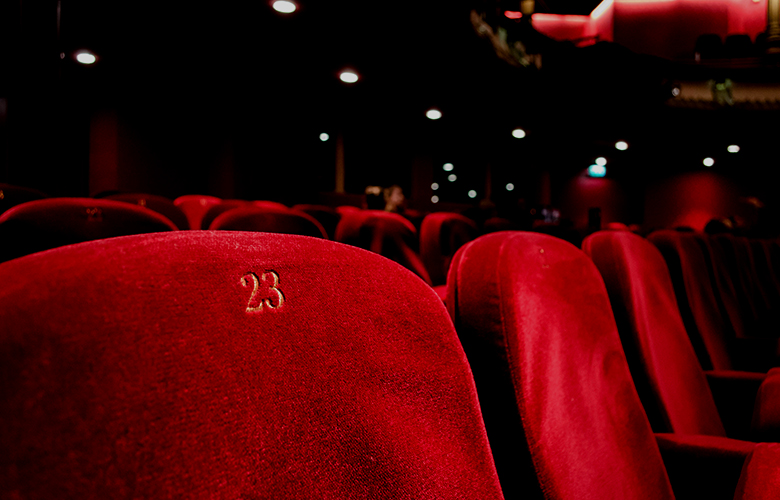
Theatre has always combined separate artistic mediums to create cohesive story lines and narratives. Artists devise novel uses for everyday and non-conventional objects as a means of expression, and the component pieces that are employed in theatrical settings help stimulate creativity. Likewise, the informational digital age has created a myriad of theatrical possibilities for producers of the performing arts, and automation and digital tech advancements have become standard to functioning theatres. How has technology changed theatre? Here are four ways technology has changed the onstage performance landscape:
Without a doubt, a musical theatre performer must be aware of the altered responsibilities musicians have with the inclusion of digital tech. The most noteworthy change is the use of tracked or pre-recorded music in live performance settings, a concept that is vehemently debated, and usually abhorred by musicians.
Regardless of its merits or faults, sampled electronic music is all but guaranteed in most modern pits.
When tracks are used in conjunction with live musicians, the electronic samples help enhance and supplement the sound of the ever-shrinking size of theatre pit orchestras. Moreover, musical instruments now rely heavily on digital tech to create the required contemporary instrumentations.
For example, a musician may employ different placements of various microphone types, or could add guitar pedals and effects boards, or may also incorporate a click track for tempo control. Technology has drastically changed how a musician performs and the soundscapes that can now be achieved. Another obvious case in point: a pianist rarely plays on an acoustic piano in the theatre anymore, instead opting for fully programmed keyboards or Workstations.
While a pit band creates the music, Sound Design uses technology in a multitude of configurations to capture the audio and present it to the audience in a particular way. Soundboards are now fully digital and can completely edit any instrument voicing through the use of preamps and synthesizers.
Vocal processing is common use now. Sound effects no longer need to be field recorded; digital effects are available for purchase online. Sound rigging is better than ever and in increasingly smaller sizes. No need for all the sound cables: digital snakes and Wi-Fi RF boards are fully expected as functional items integral to the creation of the sound onstage. Sound Designers, in essence, exist as live purveyors of sound through technology.
This may seem like an obvious example, but that is because automation can be very noticeable onstage as hydraulics lift in large props or set pieces. On a smaller scale, many traditional items in theatre rigging now rely on automatic timed responses from its tech. Follow-spots were previously operated by stagehands that illuminated the action on stage, but that practice is frequently substituted by automated digital follow-spots controlled from the tech booth.
Whereas once a stagehand moved fly systems in by hand, automated cues now complete that labour.
Lighting cues are often programmed in sequential order over fifteen-second spans. Large props are often automated on rails, and they are timed digitally by stage management cues from backstage. Projections and video displays are currently very popular amongst theatre creators, and the many possible uses of this tech are just beginning to be explored.
While this does not particularly pertain to the day-to-day functioning of a theatre, it probably has the largest effect on the theatre community collectively. The days of traditional advertising are dwindling, and social media is quickly becoming the most prominent way to sell tickets.
In many ways, this is of best consequence to the small or independent theatre company, as the amount of potential ticket buyers a production can now reach is fully dependent on its online presence and digital community, rather than on its advertising budget. Most tickets are sold online and through email, so forget the paper stubs. Ticket sales are readily accessible for anyone with Internet access.
Moreover, with the increase of Internet traffic on social media, advertising is no longer limited to a single marketing department; it now becomes a company-wide responsibility, as all performers of a theatre production can manufacture sales traction through their individual online presence.
Theatre is evolving into a community-wide relationship between the performers and their audience via online channels.
While a majority of these technological aspects are of such common usage in the performing arts that they create no surprise in the average theatregoer, it is good for us as artists to remind ourselves of our reliance on theatre tech. Performers need to fit their artistic skills inside the parameters created by the inclusion of tech. An adroit knowledge about how to use all the available tech resources at your disposal could vastly improve and economize a production.
This is all part of becoming a nuanced performer in the digital age, and it can lead to some of the most creatively inspired work, on a musical and visual level. For examples, be sure to check out The Royal National Theatre’s production of The Curious Case of the Dog in the Night-Time, or the Royal Shakespeare Company’s production of The Tempest.
Is There A Link Between Mental Illness And Creativity?
You Haven’t Worked A Hard Day In Your Life
© 2021 TheatreArtLife. All rights reserved.

Thank you so much for reading, but you have now reached your free article limit for this month.
Our contributors are currently writing more articles for you to enjoy.
To keep reading, all you have to do is become a subscriber and then you can read unlimited articles anytime.
Your investment will help us continue to ignite connections across the globe in live entertainment and build this community for industry professionals.